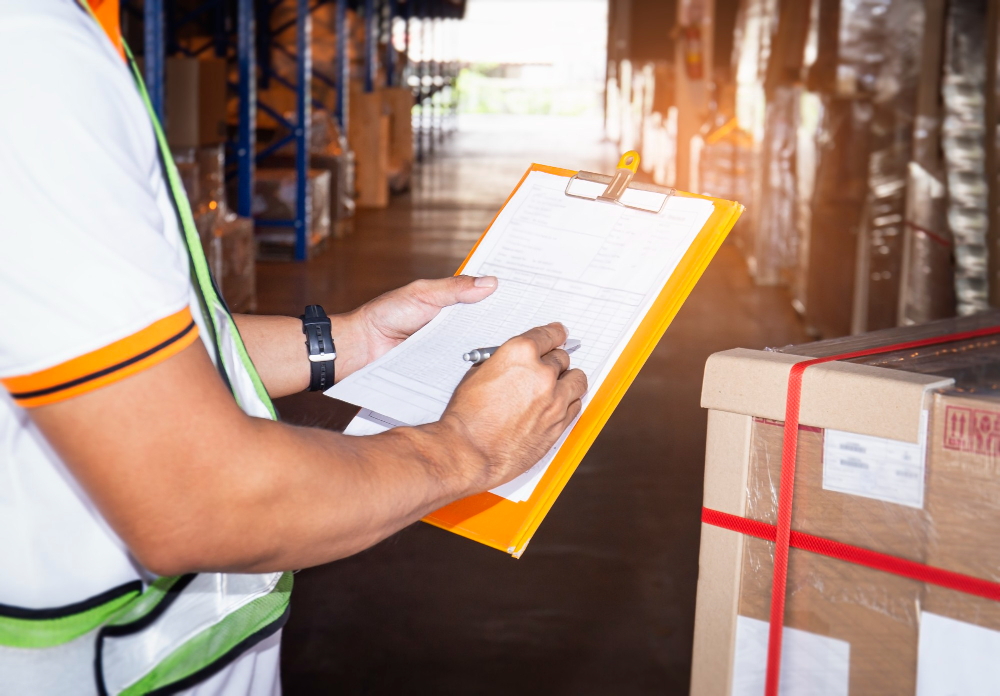Since the UK left the European Union, we’ve seen a significant increase in the use of T1 forms due to the country’s departure from the EU customs territory. Why has this caused an increase? Well in order to answer that question, we need to understand what a T1 document is, how a T1 document works, and why you need them.
What is a T1 shipping document?
A T1 shipping document is a transit document that allows goods from outside the European Union to move freely within the EU. It means that no taxes or customs duties are payable on the cargo as it moves between countries within the European Union.
Providing you have your T1 customs forms in place, your cargo will be able to move freely within the EU without any duty or tax being required to pay. Instead, the goods will be customs cleared in the country of destination, with any import duties and taxes being paid at the local rates applicable in the destination country, rather than any stops made through the journey.
How does a T1 document work?
The T1 process is started by the customs broker exporting the goods, who is also responsible for paying any duty and VAT that is required on the cargo. This step ensures that taxes can be appropriately charged on your goods by any country visited during transit if the process is not completed at the destination country. This prevents people from using T1 forms to bypass paying duty and VAT to customs.
At the departure destination of your cargo, the T1 procedure will be opened and will not be closed until it has reached its final destination in the EU. However, the time between your cargo leaving its first destination, and it arriving at its final destination must not be longer than 8 days.
In order to get a T1 form, your broker must visit the NCTS website and complete the declaration. This must be done before the haulier presents your goods to the border force and makes the T1 form live. It’s important to remember that a copy of your T1 form must travel with your cargo, so that border agents who inspect your cargo can see your goods are travelling under the proper T1 transit procedure.
What do I need to prepare for a T1 form?
To apply for the T1 customs form, you’ll be asked to provide:
- Commercial invoice
- Packing list
- Transport document
You’ll also need details like information about the consignor and consignee, the number of packages and their total weight, the number of seals and the customs tariff number. This means the goods are traceable through the entirety of the journey, and also ensures that the goods have been cleared properly.

How long do I have until I need to close off a T1 form?
Customs authorities won’t close the process until your cargo has reached its final EU destination. Remember, your cargo must arrive within seven days of your cargo leaving its origin-destination! Once arrived, it will be inspected by border authorities, and an import clearance agent will declare your T1 forms to customs who will then start reclaiming duty and VAT from the customs broker.
If a T1 form has not been closed at least 3 weeks after arriving at its final destination, HMRC will contact the customs broker to make sure duty and taxes have been paid.
What happens if a T1 form isn’t completed/closed off properly?
Failure to complete a T1 customs form will result in the Central Community Transit Office (CCTO) contacting your customs broker to confirm whether or not the T1 process has been completed. The broker then has one month to show evidence that the cargo has cleared.
A month after this initial request, the CCTO then issues a “Right to be Heard” (RTBH) notice, which gives the custom broker another month to give evidence that the T1 form has been closed off. If the broker can’t provide evidence of clearance by the end of the “Right to be Heard” period, they will be issued with a C18 payment demand for the charges owed on the shipment.
The responsibility for paying Duty and VAT will be transferred to you, meaning it’s vital you engage with a freight forwarder familiar with the T1 process. This ensures that you won’t have to pay double tax, or go through the inconvenience of reclaiming taxes once the necessary clearance documents are obtained.
Need to prepare a T1 form?
If you have any additional questions about the T1 transit form and the application process or would like to arrange one, contact us today!
Learn more about:
